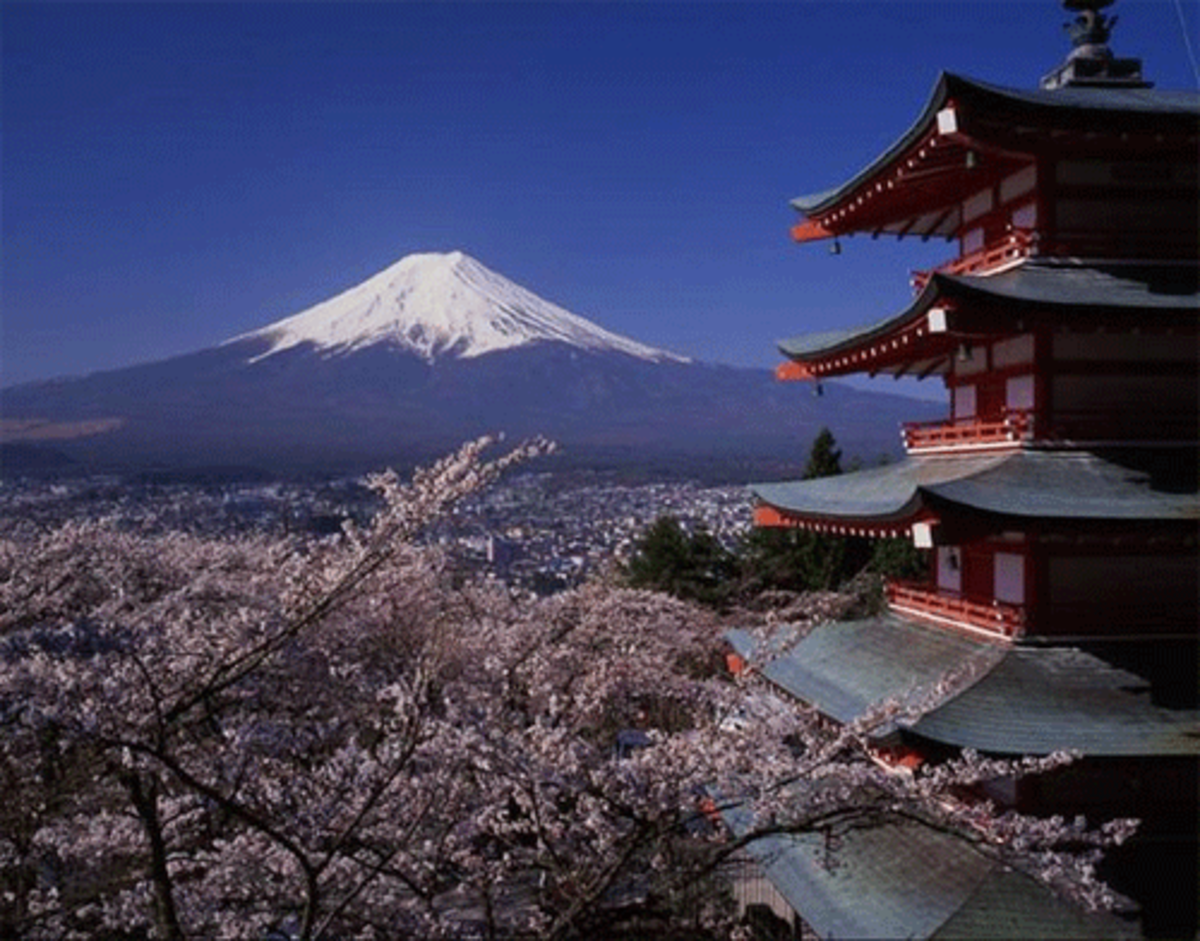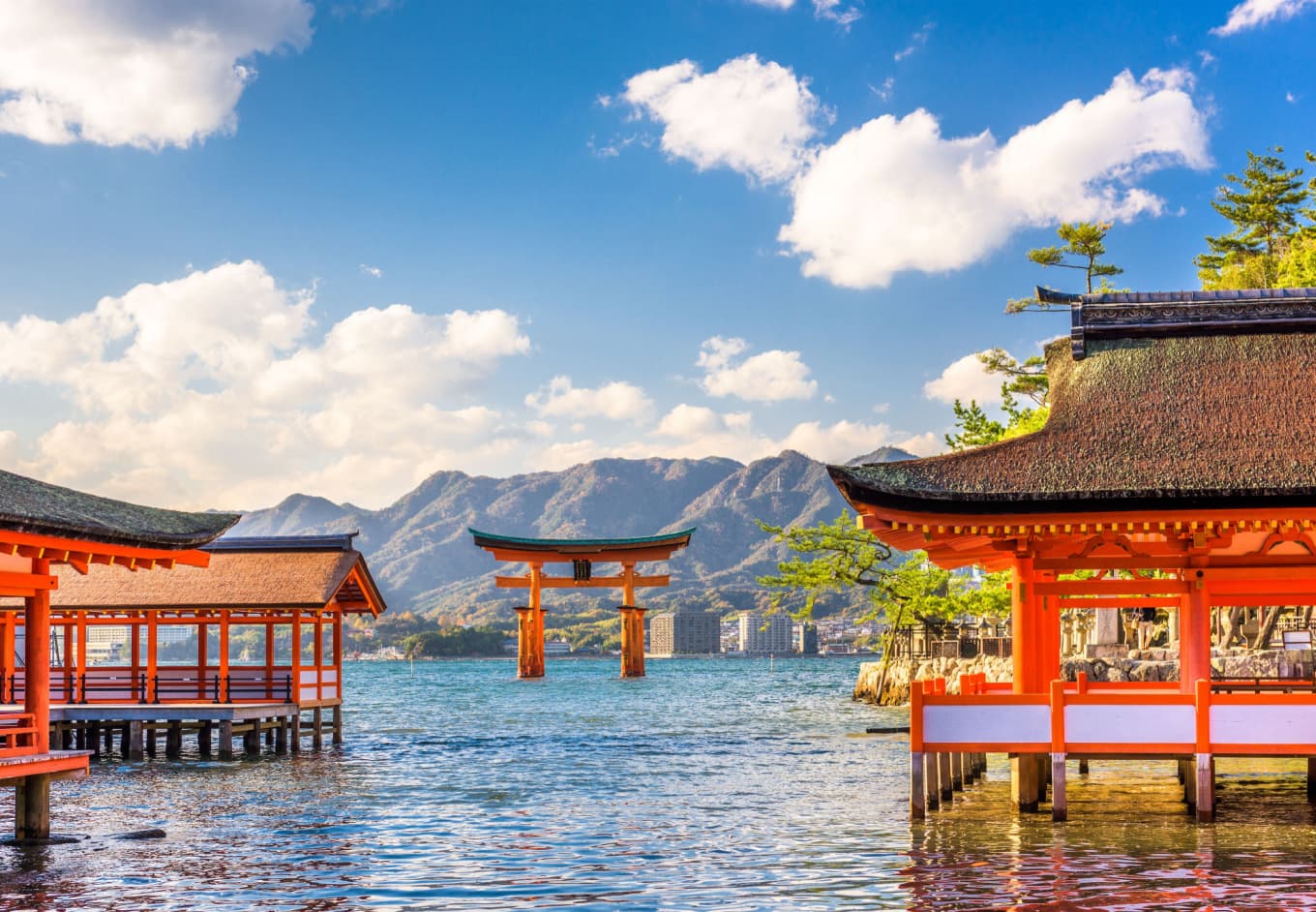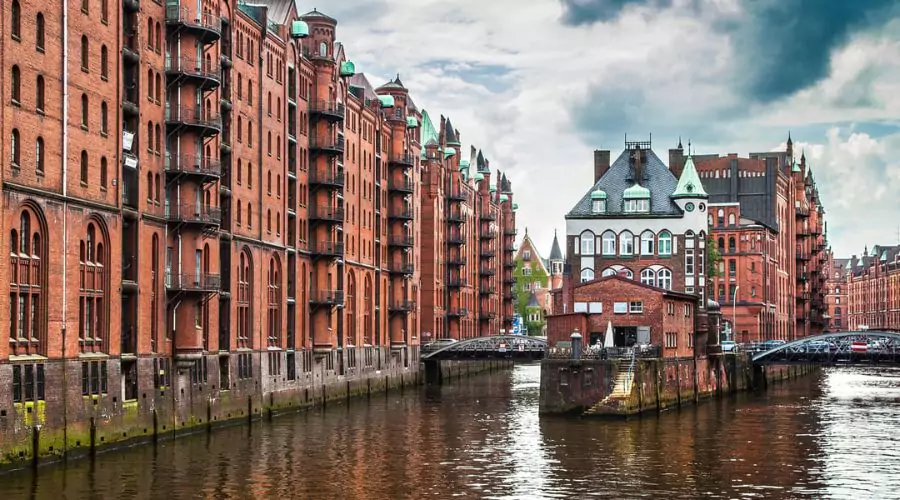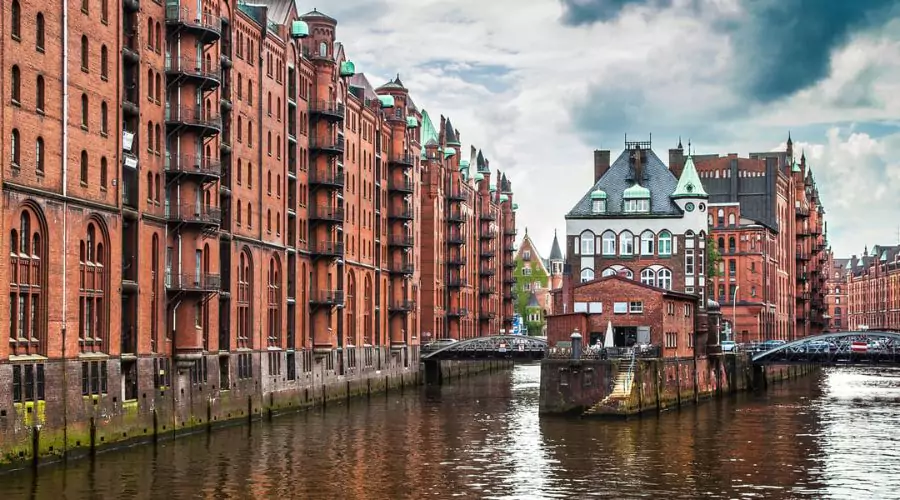
Japan, an archipelago nation where ancient traditions coexist harmoniously with futuristic innovation, stands as an unparalleled destination for global travelers. From the serene beauty of cherry blossoms and the stoic grandeur of samurai castles to the neon-lit frenzy of Tokyo and the tranquil allure of Zen gardens, Japan offers an odyssey that captivates the soul and ignites the imagination. This article delves into the best tourist attractions across Japan, exploring its rich history, offering essential travel tips, guiding you on the best time to visit, suggesting accommodation options, tantalizing your taste buds with local cuisine, and outlining efficient transportation methods for an unforgettable journey.
A Glimpse into Japan’s Rich History
Japan’s history is a tapestry woven with threads of mythology, imperial dynasties, feudal warfare, and rapid modernization. Beginning with the ancient Jomon period, the nation progressed through eras marked by the arrival of Buddhism, which profoundly influenced its art, architecture, and philosophy. The Heian period (794-1185) saw the flourishing of aristocratic culture in Kyoto, giving birth to masterpieces of literature and art. The subsequent Kamakura, Muromachi, and Edo periods were dominated by the samurai warrior class, shaping Japan’s unique martial arts, codes of honor, and distinctive castles. The Edo period (1603-1868), characterized by over 250 years of peace and isolation under the Tokugawa shogunate, fostered a vibrant urban culture and saw the development of ukiyo-e art and Kabuki theatre.
Related Articles about Japan: An Odyssey Through Timeless Traditions and Modern Wonders:
- A Journey Through Time and Taste: Your Ultimate Guide to Italy
- Unveiling the Joys of France: A Comprehensive Guide to Experiences
- Japan: A Journey Through Tradition, Innovation, and Unforgettable Experiences
- Italy: A Journey Through Timeless Beauty and Enduring Charm
- Unveiling the Charms of France: A Guide to the Best Tourist Attractions
The Meiji Restoration in 1868 marked a pivotal shift, opening Japan to the West and initiating rapid industrialization and modernization. This profound history is not merely confined to textbooks; it is visibly etched into the landscape of Japan, from the ancient temples and shrines that dot its countryside to the meticulously preserved traditional towns and the enduring reverence for cultural practices. Understanding this historical context enriches the experience of visiting Japan, allowing travelers to appreciate the layers of meaning behind its magnificent attractions.
Unveiling Japan’s Main Attractions
Japan’s diverse geography and rich cultural heritage have given rise to an incredible array of attractions that cater to every interest.
Tokyo: The Pulsating Heart of Modern Japan
The sprawling metropolis of Tokyo offers an electrifying blend of tradition and avant-garde. Shibuya Crossing, often dubbed the "scramble," is an iconic symbol of urban dynamism, where thousands of pedestrians surge across simultaneously in a breathtaking ballet of human movement. Nearby, the Meiji Jingu Shrine provides a serene escape, dedicated to Emperor Meiji and Empress Shoken, nestled within a vast forest. For panoramic city views, the Tokyo Skytree or the Tokyo Metropolitan Government Building’s observation decks offer unparalleled vistas.
Asakusa transports visitors back to old Tokyo with its historic Senso-ji Temple, the city’s oldest temple, approached through the bustling Nakamise-dori market street. Shinjuku Gyoen National Garden is a tranquil oasis featuring traditional Japanese, French formal, and English landscape gardens. Meanwhile, Akihabara electrifies with its neon-lit electronics stores and vibrant anime and manga culture, a mecca for otaku. For a touch of imperial history, the Imperial Palace East Garden (the former site of Edo Castle) offers a glimpse into Japan’s imperial past.
Kyoto: The Quintessential Soul of Traditional Japan
Kyoto, the ancient capital, is a treasure trove of cultural heritage, boasting over 2,000 temples and shrines. Fushimi Inari-taisha is arguably its most iconic, famous for its mesmerizing tunnel of thousands of vibrant orange torii gates winding up Mount Inari. The shimmering Kinkaku-ji (Golden Pavilion), a Zen temple adorned with gold leaf, reflects majestically over its surrounding pond. Equally captivating is Arashiyama Bamboo Grove, a ethereal forest of towering bamboo stalks that offers a mystical experience.
The historic Gion district is renowned for its traditional wooden machiya houses and as the heart of Kyoto’s geisha culture, offering glimpses of geiko and maiko (geisha and apprentice geisha) scurrying to appointments. Kiyomizu-dera Temple, a UNESCO World Heritage site, provides stunning views of the city from its wooden stage, built without a single nail. Exploring Kyoto is a journey through ancient Japan, where tea ceremonies, traditional gardens, and exquisite craftsmanship are still deeply cherished.
Osaka: Japan’s Culinary Capital and Lively Hub
Just a short bullet train ride from Kyoto, Osaka is celebrated for its boisterous atmosphere and incredible food scene. The vibrant Dotonbori district, with its iconic Glico Man sign and canal-side restaurants, is a sensory explosion of street food, entertainment, and nightlife. Osaka Castle, a magnificent reconstruction, stands as a symbol of Osaka’s rich history, offering insights into the samurai era and panoramic views from its observation deck. For thrill-seekers, Universal Studios Japan provides world-class entertainment and rides.
Hiroshima and Miyajima: A Testament to Resilience and Beauty
Hiroshima stands as a poignant reminder of history, with the Peace Memorial Park and Museum serving as a powerful tribute to the victims of the atomic bombing and a fervent plea for peace. From Hiroshima, a short ferry ride leads to Miyajima Island, home to the awe-inspiring Itsukushima Shrine, famous for its "floating" torii gate that appears to stand on water during high tide. The island also offers charming deer, scenic hiking trails, and delicious oysters.
Nara: Ancient Capital and Deer Sanctuary
Nara, Japan’s first permanent capital, is famous for its friendly wild deer that roam freely in Nara Park. Within the park lies Todai-ji Temple, housing a colossal bronze statue of the Great Buddha, one of the largest in the world, encased within an impressive wooden hall. Nara offers a peaceful, historical counterpoint to the bustling cities.
Mount Fuji and Hakone: Iconic Landscapes and Onsen Retreats
Japan’s most iconic landmark, Mount Fuji, is a majestic stratovolcano whose symmetrical cone is revered as sacred. The surrounding Hakone region is a popular resort area offering breathtaking views of Fuji (weather permitting), scenic boat cruises on Lake Ashi, volcanic hot springs (onsen), and the Hakone Open-Air Museum, blending art with nature. It’s an ideal escape for relaxation and natural beauty.
Beyond the Beaten Path:
Other notable attractions include the traditional samurai residences and stunning Kenrokuen Garden in Kanazawa, the preserved Edo-period townscape of Takayama, the pristine ski slopes and national parks of Hokkaido, and the subtropical beaches and unique Ryukyuan culture of Okinawa. Spiritual journeys can be undertaken on the Kumano Kodo pilgrimage routes or amidst the temple complexes of Koyasan.
Navigating Japan: Essential Travel Tips
Traveling in Japan is remarkably efficient and enjoyable, but a few tips can enhance your experience:
- Connectivity: A pocket Wi-Fi device or a local SIM card is invaluable for navigation and communication.
- Etiquette: Politeness is paramount. Bowing is common, remove shoes before entering homes or certain traditional establishments, keep noise levels low on public transport, and avoid eating or drinking while walking.
- Cash is King (Sometimes): While credit cards are widely accepted in major cities, carrying cash is advisable for smaller shops, rural areas, and some restaurants.
- Language: Learning a few basic Japanese phrases (hello, thank you, excuse me) goes a long way, though English is increasingly common in tourist areas. Google Translate is an excellent aid.
- JR Pass: For extensive travel across multiple regions, consider purchasing a Japan Rail Pass before arriving, as it offers unlimited travel on most JR trains, including the Shinkansen.
The Best Time to Visit
Japan offers distinct beauty in every season:
- Spring (March-May): Unquestionably the most popular time, characterized by the breathtaking cherry blossoms (sakura). The weather is mild and pleasant, but attractions and accommodations can be crowded and expensive.
- Autumn (September-November): Another fantastic time to visit, with vibrant autumn leaves (koyo) painting the landscapes in fiery hues of red, orange, and gold. The weather is crisp and comfortable, ideal for sightseeing and hiking.
- Summer (June-August): Hot and humid, especially in the south, but lively with numerous festivals (matsuri) and fireworks displays. It’s a great time for Hokkaido’s cooler climate or Okinawa’s beaches.
- Winter (December-February): Offers stunning snowscapes, excellent skiing and snowboarding opportunities in regions like Hokkaido and the Japanese Alps, and a chance to enjoy tranquil onsen baths. Crowds are generally thinner, except during New Year holidays.
Accommodation: Finding Your Perfect Stay
Japan offers a diverse range of accommodation options to suit every budget and preference. From luxurious international hotels in major cities to charming ryokans (traditional Japanese inns) that provide an authentic cultural experience with tatami rooms and hot spring baths, there’s something for everyone. Capsule hotels offer a unique, budget-friendly option, while guesthouses and Airbnb properties provide local immersion. Booking well in advance is highly recommended, especially during peak seasons and around major festivals.
A Culinary Journey: Japan’s Local Food
Japanese cuisine is a UNESCO Intangible Cultural Heritage, celebrated for its exquisite flavors, meticulous presentation, and emphasis on fresh, seasonal ingredients.
- Sushi and Sashimi: Iconic dishes, showcasing the freshest seafood.
- Ramen: A comforting bowl of noodles in flavorful broth, with regional variations like Tonkotsu (pork bone broth) in Kyushu or Miso Ramen in Hokkaido.
- Tempura: Lightly battered and deep-fried seafood and vegetables.
- Udon and Soba: Thick and thin wheat or buckwheat noodles, served hot or cold.
- Okonomiyaki and Takoyaki: Savory pancakes and octopus balls, respectively, are quintessential Osaka street foods.
- Yakitori: Grilled skewers of various meats and vegetables.
- Matcha: Powdered green tea, integral to tea ceremonies and modern desserts.
- Sake: Traditional rice wine, with countless varieties to sample.
Don’t overlook the convenience stores (konbini) like 7-Eleven or FamilyMart, which offer surprisingly high-quality and delicious ready-to-eat meals, snacks, and drinks.
Getting Around: Transportation Options
Japan boasts one of the world’s most efficient and punctual transportation systems.
- Shinkansen (Bullet Train): The backbone of inter-city travel, offering incredible speed and comfort. The Japan Rail Pass is often the most economical choice for tourists planning extensive travel.
- Local Trains and Subways: Extensive networks crisscross major cities like Tokyo and Osaka, making urban exploration seamless. Purchasing an IC card (e.g., Suica or Pasmo) allows for tap-and-go travel on most public transport.
- Buses: Ideal for reaching destinations off the train lines, especially in rural areas or for local city tours.
- Taxis: While more expensive, they are clean, safe, and convenient for short distances or late-night travel, especially if traveling in a group.
- Domestic Flights: For longer distances, such as traveling to Hokkaido or Okinawa, domestic flights offer a time-saving alternative.
In conclusion, Japan is a destination that truly has it all: ancient history and cutting-edge modernity, serene natural beauty and bustling urban landscapes, profound spiritual sites and exhilarating entertainment. Its polite society, incredible culinary scene, and highly efficient infrastructure make it an incredibly rewarding country to explore. Whether you seek cultural immersion, outdoor adventure, or simply a taste of its unique charm, Japan promises an unforgettable journey that will leave an indelible mark on your heart and mind.








